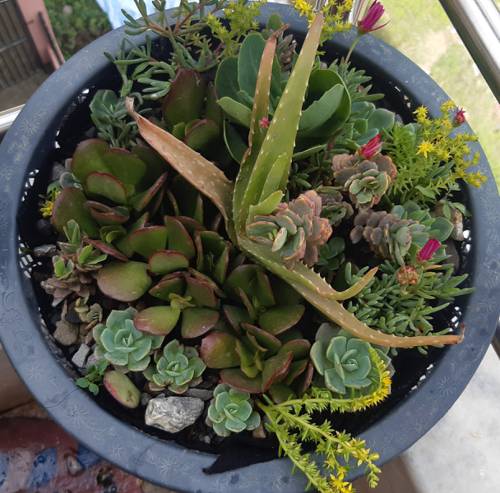
FAQ About Optimizing Indoor Plant Oxygen Production

How do plants produce oxygen?
Plants produce oxygen through a process called photosynthesis. During photosynthesis, plants absorb carbon dioxide (CO2) and water (H2O) and use energy from sunlight to convert these into glucose and oxygen. Chlorophyll, a green pigment in the chloroplasts of plant cells, plays a vital role in this process by capturing light energy. The oxygen generated is released as a byproduct into the atmosphere, improving air quality.

Which indoor plants are best for oxygen production?
Some of the best indoor plants known for high oxygen production include Snake Plant (Sansevieria trifasciata), Areca Palm (Dypsis lutescens), Money Plant (Epipremnum aureum), and Peace Lily (Spathiphyllum spp.). These plants are not only efficient at oxygen production but also help in filtering out toxins from the air, contributing to an overall healthier indoor environment.

How can I increase the oxygen output of my indoor plants?
To enhance the oxygen output of indoor plants, ensure they receive ample sunlight as it is crucial for photosynthesis. Additionally, keeping plants well-watered and in suitable temperatures will support their growth. Providing a clean environment, free of dust and pollutants, also aids in optimal plant performance. Rotating plants periodically so all parts receive light and pruning them to prevent overcrowding will further encourage healthy growth and increased oxygen production.

Do indoor plants really improve air quality significantly?
Yes, indoor plants can significantly improve air quality. Studies, including those by NASA, have shown that certain plants can remove toxins like formaldehyde, benzene, and trichloroethylene from the air. While they may not replace mechanical air purification systems, they certainly contribute to a fresher and more oxygen-rich environment, making them an excellent complement to other air quality improvement methods.

How much light do indoor plants need to maximize photosynthesis?
The light requirement for maximizing photosynthesis varies by plant species. Generally, most indoor plants thrive with bright, indirect light. However, plants like succulents and cacti, which are adapted to arid and sunny environments, require more direct sunlight. It's important to research specific light needs for each plant type you have to ensure they photosynthesize effectively and produce ample oxygen.

Can indoor plants work in artificially lit environments?
Yes, many indoor plants can adapt to artificial lighting conditions. While natural sunlight is ideal for photosynthesis, artificial lights like fluorescent or LED grow lights can complement or substitute for natural light. To optimize plant growth and oxygen production under artificial lighting, ensure that the lights provide the appropriate spectrum and intensity suited to the specific needs of your plants.

How does plant size impact oxygen production?
Generally, larger plants can produce more oxygen because they have more leaves to engage in photosynthesis. More leaf surfaces mean greater capacity to harvest sunlight and process carbon dioxide. Consequently, bigger and fuller plants, when healthy, tend to contribute more significantly to improving indoor air quality compared to smaller plants.

What types of care do indoor plants require for optimal growth?
Indoor plants need proper lighting, suitable temperatures, adequate water, and appropriate types of soil for optimal growth. Additionally, regular pruning, cleaning to remove dust, and occasional fertilization can help plants thrive by ensuring they absorb nutrients efficiently and remain free from pests and diseases. Being attentive to your plant's specific needs will ensure better health and increased oxygen production.

How often should I water my indoor plants to maximize oxygen output?
Watering frequency for indoor plants depends on the species, size, light exposure, and environment. Most indoor plants prefer soil that is kept moist but not waterlogged. A general rule is to water when the top inch of soil feels dry to the touch. Over-watering can lead to root rot, which will hinder growth and oxygen production, so it's crucial to adjust watering based on the plant's specific needs and environment conditions.

Can I overpopulate my space with indoor plants for better oxygen?
While having more plants can increase oxygen levels, overpopulating a space can lead to issues such as excessive humidity, mold growth, and competition for light and nutrients among plants. It's essential to find a balance, ensuring each plant has adequate resources and space to thrive. Proper spacing and arrangement can help create an efficient and healthy indoor ecosystem.

Do different plants produce different amounts of oxygen?
Yes, different plants have varying rates of oxygen production based on their growth rate, leaf surface area, and photosynthetic efficiency. Fast-growing plants with large leaves typically produce more oxygen. For example, plants like the Areca Palm and Snake Plant are known for their prolific oxygen production due to their large foliage and efficient photosynthetic processes.

How do temperature and humidity affect indoor plant oxygen production?
Both temperature and humidity play crucial roles in plant metabolism and photosynthesis. Most indoor plants prefer temperatures between 60-75°F (15-24°C) and moderate humidity. High temperatures and humidity can enhance growth in some plant species by increasing photosynthesis rates, whereas cold and dry conditions might slow these processes down, reducing oxygen output levels.

Can air conditioning affect the oxygen production of indoor plants?
Air conditioning can affect indoor plants by altering temperature and humidity levels, which might lead to slowed plant metabolism and reduced oxygen production. To mitigate these effects, maintain a consistent environment with stable temperatures and humidity levels, and ensure plants are not directly exposed to air conditioning drafts.

Why is it important to clean dust off leaves of indoor plants?
Cleaning dust off plant leaves is crucial because dust accumulations can block sunlight, impede photosynthesis, and thus reduce a plant’s ability to produce oxygen. Gently wiping leaves with a damp cloth or regular showers under lukewarm water can ensure your plants receive enough light to perform photosynthesis effectively.

Is it safe to have a lot of indoor plants in the bedroom?
Yes, it is safe and often beneficial to have indoor plants in the bedroom. At night, some plants like the Snake Plant continue to release oxygen, while others may release carbon dioxide during respiration. However, the amount is minimal and poses no harm. Plants can improve air quality, humidity levels, and ambiance, thus enhancing sleep quality.

How do I choose the right indoor plant for my space?
Choosing the right indoor plant depends on the available light, temperature, humidity, space, and personal preferences. Assess the environmental conditions of the intended space to find compatible plants. For example, low-light environments suit plants like the ZZ Plant, while bright spots are ideal for Fiddle Leaf Fig or Rubber Plants. Additionally, consider the plant’s size, maintenance needs, and aesthetic appeal when choosing.

Can I use fertilizers to boost oxygen production in indoor plants?
Fertilizers provide essential nutrients that promote healthy plant growth, which can indirectly support increased oxygen production. However, it's important to use fertilizers appropriately—over-fertilization can harm plants by causing root burn and nutrient imbalances. Use a balanced, water-soluble fertilizer according to the specific needs of your plants to ensure their optimal growth and health.

What role does soil type play in the health of indoor plants?
Soil type is critical to the overall health and growth of indoor plants as it affects water retention, drainage, and nutrient availability. Different plants have different soil needs—for instance, succulents prefer well-draining, sandy soil, while ferns thrive in more moisture-retentive, organic-rich soil. Choosing the right soil mix for each plant type helps ensure proper root health and supports their ability to produce oxygen effectively.

What are the signs that my indoor plant is not producing enough oxygen?
Signs that an indoor plant may not be thriving or producing sufficient oxygen include yellowing leaves, slowed growth, wilting, and brown leaf edges. These symptoms often indicate poor light availability, inadequate watering, or nutrient deficiencies. By observing these signs and adjusting care accordingly, you can help restore the plant’s health and improve its oxygen production.

How can I measure the oxygen output of my indoor plants?
Measuring the oxygen output of indoor plants directly at home can be challenging without specialized equipment. Professional-grade gas exchange or oxygen sensors can provide accurate measurements by analyzing the air composition. Alternatively, focusing on healthy growth conditions like proper light, water, and nutrient supply can naturally maximize oxygen production without needing to measure it.
